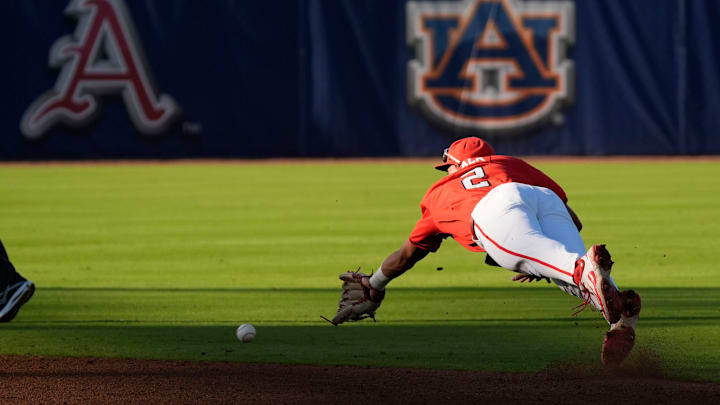With Mizzou baseball’s season officially in the books — for all the wrong reasons — I figured it was the perfect time to look back at the worst conference records in each SEC team’s history. Just a little something to lift everyone’s spirits.
Disclaimer: Due to rule changes over the years and teams shifting conferences, not all have played a full 30-game SEC schedule. These records reflect each team’s worst conference finish in a season with at least 24 games.
Georgia: 5-23 (2010)
Just two seasons earlier, the Georgia Bulldogs had hosted both Regionals and Super Regionals en route to a trip to Omaha. But in 2013, the program looked unrecognizable. Georgia’s minus-155 run differential and No. 118 RPI ranking were among the worst in school history. That RPI low would be surpassed only a few years later during what became the final season for head coach David Perno.
Following a .500 SEC campaign the year prior and a 20-9 conference record the year before that, 2013 marked the first time Georgia failed to reach double-digit SEC wins since 1999.
Georgia had its issues in 2013, but hitting wasn’t one of them. The Bulldogs ranked sixth in the SEC with a .301 team batting average and finished near the bottom of the league in strikeouts — a positive sign of their plate discipline. However, like several other teams on this list, they struggled to generate extra-base hits, recording an SEC-low 163.
The offensive leader was sophomore Zach Cone, who paced the team in batting average (.363), slugging percentage (.627) and home runs (10). Behind him, five other players who appeared in at least 40 games hit above .300, with several others not far behind. But despite the strong averages, run production remained an issue. Cone was the only player to hit double-digit home runs, and the doubles output wasn’t much better. Four players hit more than 10, but the next closest managed just six. The team leader in doubles was freshman Kyle Farmer — now playing for the Colorado Rockies — who showed early signs of the talent that would carry him to the majors.
Pitching was where everything fell apart for Georgia in 2013. Their top starter finished with an ERA around 5.50, and the other two regular starters each posted ERAs near or above 8.00. The bullpen offered little relief. The lowest ERA among pitchers with at least 15 relief appearances was 6.44, and beyond that, numbers only got worse. Several relievers had ERAs in the mid-7.00 range, while others soared into double digits.
One of the most glaring examples came from the pitcher who finished second on the team in appearances, with 27. He ended the season with a 12.41 ERA and issued 44 walks in just under 25 innings pitched — a clear sign of the staff’s overall struggles.
